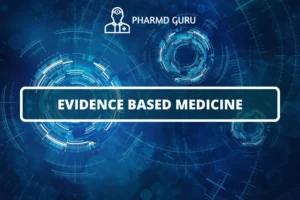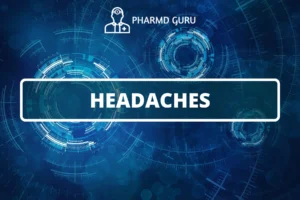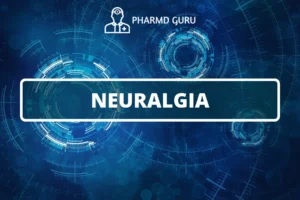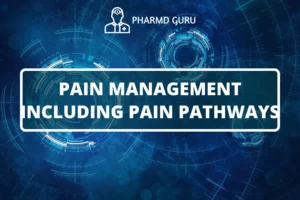Drug induced liver disorders refer to liver damage or dysfunction caused by the use of certain medications or drugs. These disorders can range from mild liver enzyme abnormalities to severe hepatitis or even liver failure. Understanding the etiopathogenesis, or the underlying causes and mechanisms, of drug-induced liver disorders is crucial for their prevention, early detection, and management. In this article, we will explore the etiology of drug-induced liver disorders, the pathophysiological processes involved, and the pharmacotherapy options used in their treatment.
SCROLL DOWN TO THE BOTTOM OF THIS PAGE FOR ACTUAL NOTES.
Table of Contents
- Introduction
- Understanding Drug Induced Liver Disorders
- Etiology of Drug Induced Liver Disorders
- Pathophysiology of Drug Induced Liver Disorders
- Clinical Presentation
- Diagnostic Approaches
- Treatment Options
- Pharmacotherapy for Drug Induced Liver Disorders
- Supportive Care
- Prevention and Risk Minimization
1. Introduction
Drug-induced liver disorders are a significant concern in the field of medicine. While medications play a crucial role in treating various conditions, they can also have adverse effects on the liver. Understanding the etiopathogenesis and available pharmacotherapy options is vital for managing drug-induced liver disorders effectively.
2. Understanding Drug Induced Liver Disorders
Drug-induced liver disorders encompass a spectrum of liver injuries caused by medications, including prescription drugs, over-the-counter drugs, herbal remedies, and dietary supplements. These disorders can present as a wide range of liver abnormalities, such as hepatocellular injury, cholestatic injury, or mixed injury patterns.
3. Etiology of Drug Induced Liver Disorders
Drug-induced liver disorders can result from various mechanisms, including:
- Direct hepatotoxicity: Some medications have intrinsic hepatotoxic properties that can directly damage liver cells.
- Metabolic idiosyncrasy: Certain individuals may have genetic or acquired predispositions that make them more susceptible to liver injury from specific drugs.
- Immune-mediated reactions: Drug-induced liver disorders can also result from immune-mediated responses, where the body’s immune system reacts to a medication and causes liver damage.
4. Pathophysiology of Drug Induced Liver Disorders
The pathophysiology of drug-induced liver disorders involves complex mechanisms:
- Activation of metabolic pathways: Drugs are metabolized in the liver through various enzymatic processes. In some cases, the metabolic activation of a drug or its metabolites can lead to liver cell injury.
- Formation of reactive metabolites: Some drugs undergo biotransformation to form reactive metabolites that can directly damage liver cells or trigger an immune response.
- Oxidative stress and inflammation: Drug-induced liver disorders often involve oxidative stress and inflammation, leading to hepatocellular injury and impaired liver function.
5. Clinical Presentation
The clinical presentation of drug-induced liver disorders can vary widely. Some individuals may remain asymptomatic, while others may experience:
- Jaundice (yellowing of the skin and eyes)
- Abdominal pain or discomfort
- Nausea and vomiting
- Fatigue and weakness
- Loss of appetite
- Dark urine
- Pale stools
6. Diagnostic Approaches
Diagnosing drug-induced liver disorders involves careful evaluation and exclusion of other potential causes of liver injury. Diagnostic approaches may include:
- Medical history: Detailed information about medication use, including prescription drugs, over-the-counter drugs, herbal remedies, and dietary supplements.
- Physical examination: Assessing for signs of liver damage or dysfunction, such as jaundice or hepatomegaly (enlarged liver).
- Laboratory tests: Blood tests to evaluate liver function, assess liver enzyme levels, and screen for potential causes of liver injury.
- Imaging studies: Imaging techniques like ultrasound or MRI to visualize the liver and assess its structure and health.
- Liver biopsy: In some cases, a liver biopsy may be performed to examine liver tissue and determine the extent of liver damage.
7. Treatment Options
The management of drug-induced liver disorders involves several approaches:
- Discontinuation of the offending drug: The first step in treatment is identifying and discontinuing the medication causing liver injury, under the guidance of a healthcare professional.
- Supportive care: Supportive measures, such as adequate rest, proper nutrition, and hydration, are important to support liver function and promote healing.
- Pharmacotherapy: In some cases, specific pharmacological interventions may be employed to manage symptoms, reduce inflammation, or promote liver regeneration.
8. Pharmacotherapy for Drug Induced Liver Disorders
a. Symptomatic relief:
- Medications to alleviate symptoms such as nausea, pain, or itching may be prescribed.
b. Glucocorticoids:
- Glucocorticoids may be used in cases of immune-mediated drug-induced liver disorders to suppress the immune response and reduce liver inflammation.
c. Ursodeoxycholic acid (UDCA):
- UDCA is sometimes prescribed to manage cholestatic drug-induced liver disorders, as it helps improve bile flow and protect liver cells.
d. N-acetylcysteine (NAC):
- NAC may be used in cases of acetaminophen overdose or toxicity to enhance the body’s antioxidant defense systems and reduce liver injury.
9. Supportive Care
Supportive care measures can aid in the management of drug-induced liver disorders:
- Rest: Sufficient rest is crucial for liver regeneration and recovery.
- Nutrition: A balanced diet that supports liver health, including adequate protein intake, is recommended.
- Hydration: Maintaining proper hydration helps flush out toxins from the body and supports liver function.
10. Prevention and Risk Minimization
Preventing drug-induced liver disorders involves several strategies:
- Awareness: Healthcare professionals should be vigilant in monitoring liver function and considering potential drug interactions or risks.
- Patient education: Informing patients about potential liver risks associated with medications and advising them on proper medication use and reporting any symptoms promptly.
- Drug monitoring: Regular monitoring of liver function through laboratory tests in patients taking medications known to have liver-related risks.
- Risk-benefit assessment: Weighing the potential benefits of a medication against the risk of liver injury before prescribing it.
ACTUAL NOTES:




